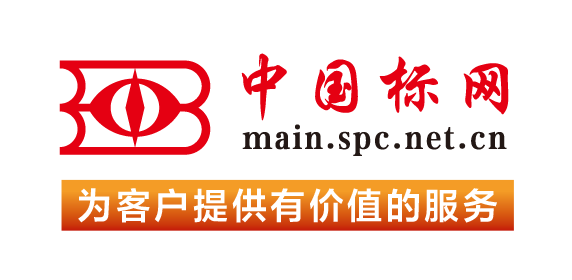【国外标准】 Standard Guide for Determining the Buoyancy to Weight Ratio of Oil Spill Containment Boom
本网站 发布时间:
2024-02-28
开通会员免费在线看70000余条国内标准,赠送文本下载次数,单本最低仅合13.3元!还可享标准出版进度查询、定制跟踪推送、标准查新等超多特权!
查看详情>>
适用范围:
4.1 This guide describes a method of determining the buoyancy to weight ratio of spill response booms. The principle is based on Archimedes Law, which states that a body either wholly or partially immersed in a fluid will experience an upward force equal and opposite to the weight of the fluid displaced by it.4.2 Unless otherwise specified, when used in this guide, the term buoyancy to weight ratio (B/W ratio) refers to the gross buoyancy to weight ratio. Buoyancy is an indicator of a spill response boom’s ability to follow the water surface when exposed to current forces, fouling due to microbial growth (which adds weight), and wave conditions. Surface conditions other than quiescent will have an adverse effect on collection or containment performance. When waves are present, conformance to the surface is essential to prevent losses. Minimum buoyancy to weight ratios for oil spill containment booms are specified in Guide F1523 for various environmental conditions.4.3 This guide provides the methodology necessary to determine the buoyancy to weight ratio using a fluid displacement method. This method is typically applied to booms having relatively low B/W ratios (in the range of 2:1 to 10:1). Booms with greater buoyancies may also be tested in this manner. It is acceptable to use calculation methods to estimate boom displacement for booms with buoyancies greater than 10:1, where the potential error in doing so would have a less significant effect on performance.4.4 When evaluating the B/W ratio of a spill response boom, consideration must be given to the inherent properties of the boom that may affect the net B/W ratio while in use. These considerations include, but are not limited to, absorption of fluids into flotation materials, membranes that are abraded during normal use, and entry of water into components of the boom.The entry of water into boom components is of particular concern with booms that contain their flotation element within an additional membrane. (This is the case for many booms that use rolled-foam flotation and relatively lightweight material for the boom membrane.) It is also important for booms that have pockets that enclose cable or chain tension members or ballast. When new, the membrane enclosure may contain air that would result in increased buoyancy. In normal use, the membrane material may be easily abraded such that it would no longer contain air, and water would be allowed in at abrasion locations. For such booms, the membrane enclosure shall not be considered as part of the flotation of the boom, and the membrane shall be intentionally punctured to allow water to enter during the test procedure.1.1 This guide describes a practical method for determining the buoyancy to weight (B/W) ratio of oil spill containment booms.1.2 This standard does not purport to address all of the safety concerns, if any, associated with its use. It is the responsibility of the user of this standard to establish appropriate safety, health, and environmental practices and determine the applicability of regulatory limitations prior to use.1.3 This international standard was developed in accordance with internationally recognized principles on standardization established in the Decision on Principles for the Development of International Standards, Guides and Recommendations issued by the World Trade Organization Technical Barriers to Trade (TBT) Committee.
标准号:
ASTM F2682-07(2018)
标准名称:
Standard Guide for Determining the Buoyancy to Weight Ratio of Oil Spill Containment Boom
英文名称:
Standard Guide for Determining the Buoyancy to Weight Ratio of Oil Spill Containment Boom标准状态:
Active-
发布日期:
-
实施日期:
出版语种:
- 推荐标准
- ASTM 51401-21 Standard Practice for Use of a Dichromate Dosimetry System
- ASTM 51956-21 Standard Practice for Use of a Thermoluminescence-Dosimetry System (TLD System) for Radiation Processing
- ASTM A1010/A1010M-24 Standard Specification for Higher-Strength Martensitic Stainless Steel Plate, Sheet, and Strip
- ASTM A1016/A1016M-24 Standard Specification for General Requirements for Ferritic Alloy Steel, Austenitic Alloy Steel, and Stainless Steel Tubes
- ASTM A105/A105M-24 Standard Specification for Carbon Steel Forgings for Piping Applications
- ASTM A1064/A1064M-24 Standard Specification for Carbon-Steel Wire and Welded Wire Reinforcement, Plain and Deformed, for Concrete
- ASTM A108-24 Standard Specification for Steel Bar, Carbon and Alloy, Cold-Finished
- ASTM A1080/A1080M-24 Standard Practice for Hot Isostatic Pressing of Steel, Stainless Steel, and Related Alloy Castings
- ASTM A1090/A1090M-19(2024) Standard Specification for Forged Rings and Hollows for Use as Base Plates in Power Transmission Structures
- ASTM A1115/A1115M-24 Standard Practice for Construction of Mechanically Stabilized Earth Walls with Inextensible Soil Reinforcement
- ASTM A1128-24 Standard Specification for Stainless Steel Shielded, Rubber Gasketed Couplings Having an Integral Restraint Feature for Joining Hubless Cast Iron Soil Pipes and Fittings Where External Restraint Is Required
- ASTM A179/A179M-24 Standard Specification for Seamless Cold-Drawn Low-Carbon Steel Heat-Exchanger and Condenser Tubes
- ASTM A234/A234M-24 Standard Specification for Piping Fittings of Wrought Carbon Steel and Alloy Steel for Moderate and High Temperature Service
- ASTM A242/A242M-24 Standard Specification for High-Strength Low-Alloy Structural Steel
- ASTM A249/A249M-24a Standard Specification for Welded Austenitic Steel Boiler, Superheater, Heat-Exchanger, and Condenser Tubes
 我的标准
我的标准 购物车
购物车 400-168-0010
400-168-0010














